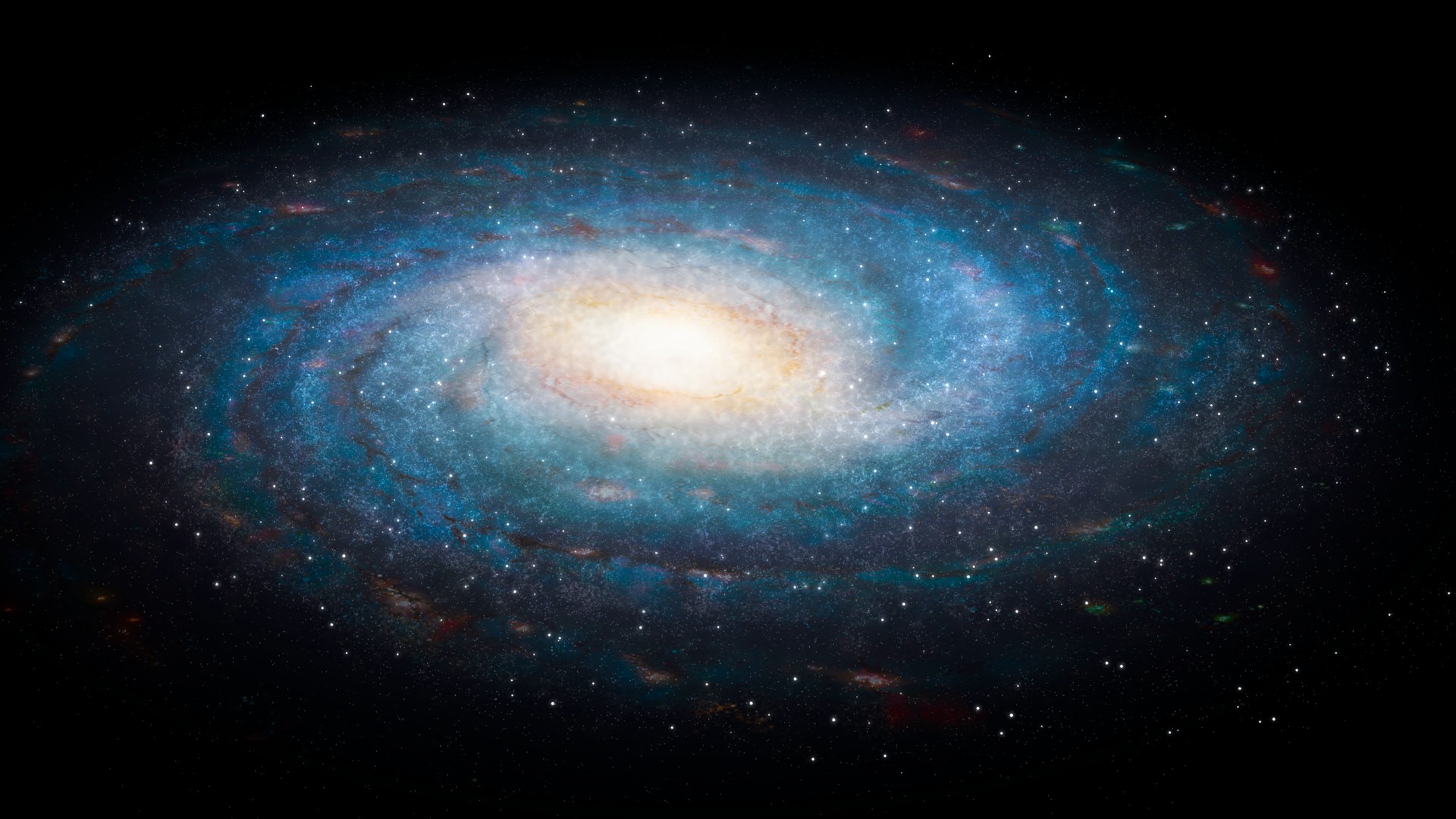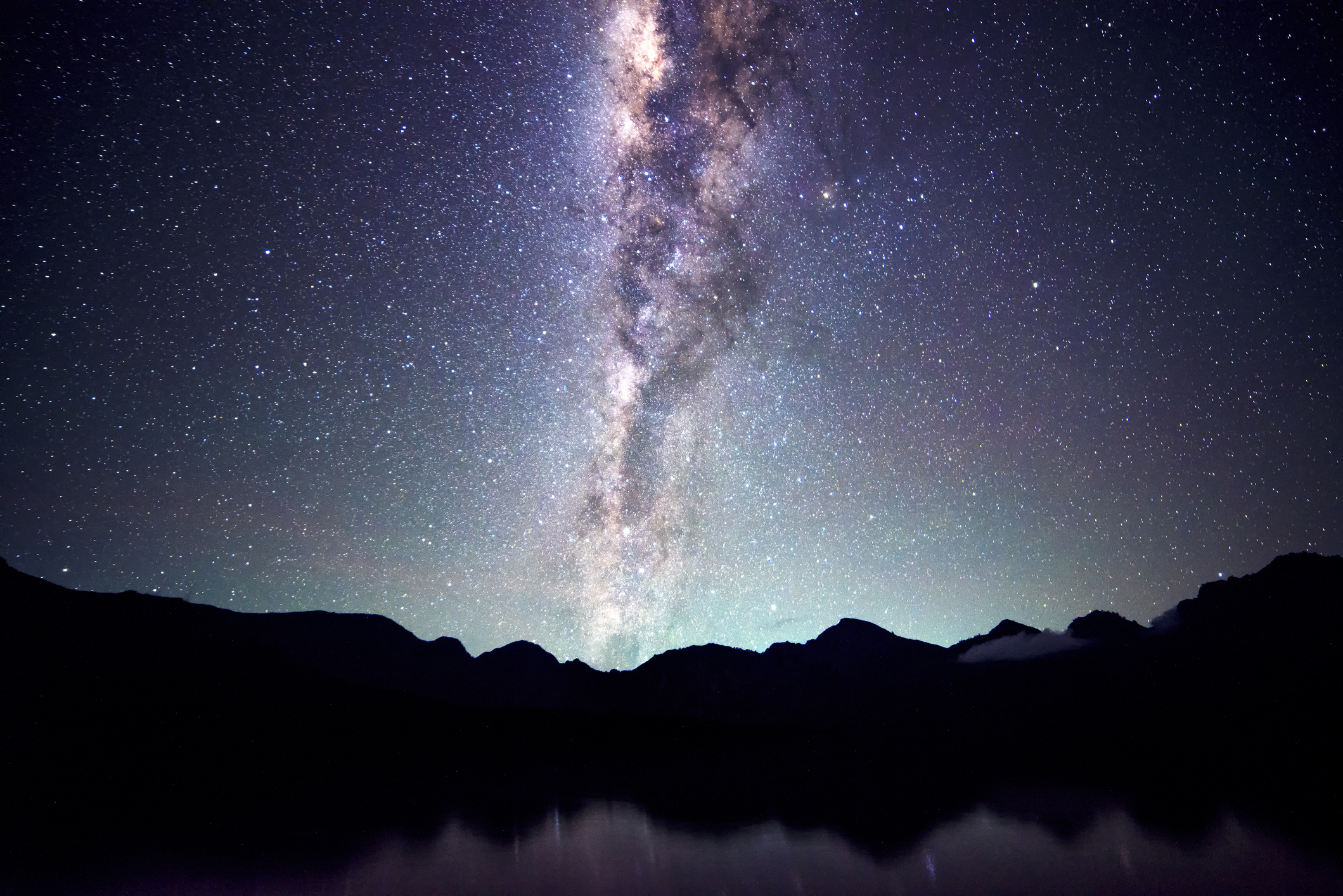
How do we know what the Milky Way looks like?
It wasn't until the early 1900s that we really started to piece together the true nature of our galaxy.

Although our telescopes have captured some truly stunning images of the Milky Way, astronomers have only a vague understanding of our home galaxy. It took a lot of work even to get that sketch, and it's amazing what we've been able to learn from our limited vantage point.
Here on Earth's surface, the Milky Way galaxy appears to the naked eye as a nebulous band across the sky. While astronomers and philosophers have debated the true nature and location of the Milky Way for ages, the great astronomer, physicist and all-around genius Galileo Galilei was the first to discover the galaxy's true nature: countless stars so small that their light blends together. In the mid-1700s, philosopher Immanuel Kant correctly guessed that the Milky Way was a rotating disk of stars, and because we were embedded in that disk, it appeared as a band to us. A few decades later, astronomer William Herschel attempted to create a map of the universe, with little success.
It wasn't until the early 1900s that we really started to piece together the true nature of our galaxy. That's when astronomer Edwin Hubble discovered that the Andromeda nebula was, in fact, the Andromeda galaxy, an "island universe" sitting millions of light-years from us. The Milky Way wasn't just a disk of nearby stars. It formed the bulk of our own galaxy, so our galaxy took on the name of that familiar sky feature.
Related: Milky Way galaxy's spiral arms revealed in stunning detail by chemical mapping
Observations of other galaxies helped us piece together what our home galaxy looked like. Most disk galaxies host spiral arms and a dense central bulge, so it's natural to assume that the Milky Way has those features as well. But directly mapping the Milky Way is an extremely challenging task. For one, it's big — roughly 100,000 light-years at its widest point. And there's a lot of stuff inside it — somewhere between 100 billion and 400 billion stars, hundreds of thousands of star-forming regions, and countless planets, black holes, neutron stars and lots more. So surveys of even small portions of the Milky Way require enormous amounts of resources.
And then there's dust. Hanging out in interstellar space, dust has the annoying property of dimming and scattering light. Because we are embedded in the Milky Way, the farther we try to look, the more our view is obscured by dust. Even the most powerful telescopes in the world can't directly examine regions on the opposite side of the galaxy.

So, to map the Milky Way, researchers use many kinds of observations and combine those with comparisons with other galaxies and clever theoretical modeling to put together a complete picture.
Get the Space.com Newsletter
Breaking space news, the latest updates on rocket launches, skywatching events and more!
For example, globular clusters orbit the center of the Milky Way in a roughly spherical arrangement. By plotting their positions in three-dimensional space, we can find where the center is — roughly 25,000 light-years away from us.
We can also examine the motions of stars as they orbit the center and use our understanding of gravity to model what the core must look like. It's through this technique that we think our galaxy is a "barred" spiral — the core is elongated, and maybe even peanut-shaped. This is confirmed by observations showing that a certain kind of red giant star that lies near the core is split into two populations and that infrared light coming from the core isn't symmetrical.
The Gaia spacecraft, launched in 2013, has one main mission: to create a census of as many stars as possible, recording their distances, motion, brightness and colors. To date, that mission has cataloged nearly 2 billion stars, which, while impressive, still represents only roughly 1% of all the stars in the Milky Way.
Still, that gives astronomers an enormous repository of information about our local patch of the galaxy. Besides providing an accurate map of our galactic neighborhood, these data can be used as a baseline for comparing and contrasting other, much narrower but deeper surveys to look for anything suspicious that might help us build a map of the larger galaxy.
Take the spiral arms. Despite their dramatic appearance, they are only about 10% denser than their surroundings. Instead, they appear visually striking because they are regions of active star formation, hosting lots of newly formed, big, bright stars. Because we have a detailed map of our local galactic patch, which is not all that active with star formation, we can look for higher concentrations of star formation to sketch out the spiral arms.
Through these techniques, we know that the Milky Way has at least two prominent spiral arms, and those arms are anchored on a central bar- or peanut-like core in a giant S shape. Beyond that, however, things are a little fuzzier. The galaxy might have two additional medium-intensity arms, or just a tangled mess of spurs and branches. Any "map" you might encounter of the Milky Way is mostly conjecture and will likely change every few years as we improve our techniques and gain a better understanding.
Join our Space Forums to keep talking space on the latest missions, night sky and more! And if you have a news tip, correction or comment, let us know at: community@space.com.

Paul M. Sutter is an astrophysicist at SUNY Stony Brook and the Flatiron Institute in New York City. Paul received his PhD in Physics from the University of Illinois at Urbana-Champaign in 2011, and spent three years at the Paris Institute of Astrophysics, followed by a research fellowship in Trieste, Italy, His research focuses on many diverse topics, from the emptiest regions of the universe to the earliest moments of the Big Bang to the hunt for the first stars. As an "Agent to the Stars," Paul has passionately engaged the public in science outreach for several years. He is the host of the popular "Ask a Spaceman!" podcast, author of "Your Place in the Universe" and "How to Die in Space" and he frequently appears on TV — including on The Weather Channel, for which he serves as Official Space Specialist.
-
Pogo Sorta like guessing the size and shape of a vast forest from the viewpoint of a sparrow living on one branch of one tree.Reply -
Marc2001 We won't know the true size & shape of our galaxy until some very, very distant time in the future when we will have the technology to send some sort of spacecraft to intergalactic space at a speed much, much faster than light to get a still or video of it.Reply -
Questioner Just like the actual truth,Reply
not the mythical 'singular absolute eternal truth',
the Milky way looks however it does depending on when, where & how you view it.
The intersection of many varried actual truths gives a more stereoscopic/comprehensive view.
In explicit language what i believe they meant was
"how does the Milky Way look maybe half a million light years away centered perpendicularly 'above' the fragmentary disk of stars."
Clear, explicit questions help to find clearer more accurate 'answers'. -
Questioner (fell short of my own critique)Reply
should have included in the visible spectrum, (about) now.









